Invented by optician Peter Barlow, the Barlow lens is often capitalized due to its eponymous nature. A common optical component, this device slots in between the telescope’s focuser (or star-diagonal) and the eyepiece. That is, you put the eyepiece in the barlow, then the barlow in the telescope as if it were an eyepiece.
The chief aim of integrating a Barlow lens within the telescope’s optical pathway is to increase the magnification offered by any eyepiece or to increase the telescope’s focal length for photographing the planets. By owning just a single telescope Barlow lens, you effectively expand the potential magnification options available in your collection of eyepieces. This not only offers cost savings but also simplifies your magnification choices.
Also read: How to Use a Barlow Lens and How Does It Work?
The most common power for a Barlow is 2x, but they can also be found in 2.5x, 3x, and even 5x varieties, and rarer, more esoteric magnifications can be found as well for certain specialty applications. (Binoviewers, for example).
Many complex eyepiece designs use built-in Barlow lenses as part of their design, but they can usually still be used with separate Barlows should you choose.
A Barlow will multiply the magnification of your telescope by whatever its magnification factor is. That is, a Dobsonian with a 25mm plossl normally provides 48x. Add a 2x Barlow, and that reaches 96x.
When choosing a barlow and eyepieces, it is important that you do not double up on magnifications. For example, 20mm and 10mm eyepieces are often provided together with beginner telescopes. Getting a 2x Barlow will make your 20mm provide the same magnification as the 10mm eyepiece, so there’s no good reason to get a 2x Barlow instead of a 5mm eyepiece. A 3x Barlow meanwhile, will effectively convert those same two eyepieces into 6.7mm and 3.3mm eyepieces. These are extremely short focal lengths, but they’re not redundant, so in total, you’d have 20mm, 10mm, 6.7mm, and 3.3mm focal lengths to choose from.
It’s also important to remember that Barlows aren’t magic. You still have a maximum useful magnification defined by your aperture and the optical quality of the system. So don’t just get a 5x Barlow because it reaches the highest power.
As discussed in the eyepiece article:
- Magnification = (Telescope Focal Length * Barlow Magnification Factor) / Eyepiece Focal Length
- Maximum Useful Magnification = 2x per mm of aperture = 50x per inch of aperture
What Barlow to get will depend upon the focal ratio of your telescope.
- Focal Ratio = Focal Length in mm / Aperture in mm
Fast telescopes have a lower Focal Ratio, Slow telescopes have a higher Focal Ratio.
If your telescope is at f/10 or f/15, or slower, it may not make much sense to raise the focal ratio even more, so you’ll probably only need a 2x Barlow, if that. However, a telescope at f/5 or slower might actually be able to make use of a 5x Barlow in some rare circumstances. Don’t even consider a 5x Barlow unless your telescope has a fast (low) focal ratio. Generally, the higher the Barlow’s magnification, the less versatile it is, since it’ll only really work with long focal length eyepieces. Stick with magnifications of 2x to 3x.
Barlow Lens Specifications and Brands to Look For
If your telescope came with an included Barlow, odds are it’s very bad. Use it only to convince yourself of its uselessness. The most common type included with cheaper beginner telescopes is a single plastic lens, which causes severe chromatic aberration and other distortions in the image. The dual-element Barlow lens has emerged as the popular choice in the industry.
For optimum results, a Barlow lens should integrate seamlessly without introducing any optical distortions or diminishing the field of view. The view output from a 10 mm eyepiece combined with a 2x Barlow should be almost identical to that from a 5 mm eyepiece of the same design. If this isn’t the case, it’s an indicator of the Barlow lens’ inferior quality or design flaws.
When searching for a Barlow, you must get one with an achromatic or apochromatic lens (2 lens elements or 3 or more lens elements). It should also be fully multi-coated to prevent internal reflections and preserve high contrast. A Barlow is really not an element to cheap out on, since a bad Barlow can make the image worse. If it’s going to double your eyepiece collection anyway, it seems like you can afford to make sure you don’t end up with one that adds aberrations and false color fringing.
What Barlow to get will depend on the focal ratio of your telescope. If your telescope is at f/10, f/15, or slower, it may not make much sense to raise the focal ratio even more, so you’ll probably only need a 2x Barlow, if that. However, a telescope at f/5 or slower might actually be able to make use of a 5x Barlow in some rare circumstances. Don’t even consider a 5x Barlow unless your telescope has a fast focal ratio. Generally, the higher the Barlow’s magnification, the less versatile it is since it’ll only really work with long-focal-length eyepieces. Stick with magnifications of 2x to 3x.
The Barlow I primarily use is a GSO/Apertura 2.5x Apo Barlow. It has good optics yet remains quite affordable. Note that it will make the 25mm/10mm setup common in beginner telescopes redundant. Apertura/GSO also sells a 2x and 3x achromatic Barlow which is quite good.
Celestron, Orion, and others sell a 2x “Omni” or “Shorty” Barlow, which may have slightly more false color in fast telescopes but is lighter and has a shorter profile than many 2x achromatic Barlows. Shorty Barlows extend the exit pupil out farther than longer Barlows of the same magnification, so they are more likely to mess with long-focus, wide-field eyepiece designs. Celestron also carries 2x and 3x Barlows to match some of their other eyepiece lines, such as the X-Cel and Luminos brands.
Premium brands like Explore Scientific and TeleVue have their own Barlows, but there’s not a whole lot of difference between a mid-range barlow and a premium barlow, and at that price point, you may want to consider a Focal Extender instead.
Best Barlow Lens For 1.25” Focuser: My Recommendations
It’s likely that you are going to want a 1.25” Barlow over a 2” one. For planetary imaging, it’s all you need, and most shorter focal length oculars that you’d want to use with a Barlow are 1.25” anyway. A 1.25” Barlow is also cheaper and much lighter in weight than a 2” unit.
1. Under $20: NEEWER 2X Barlow Lens
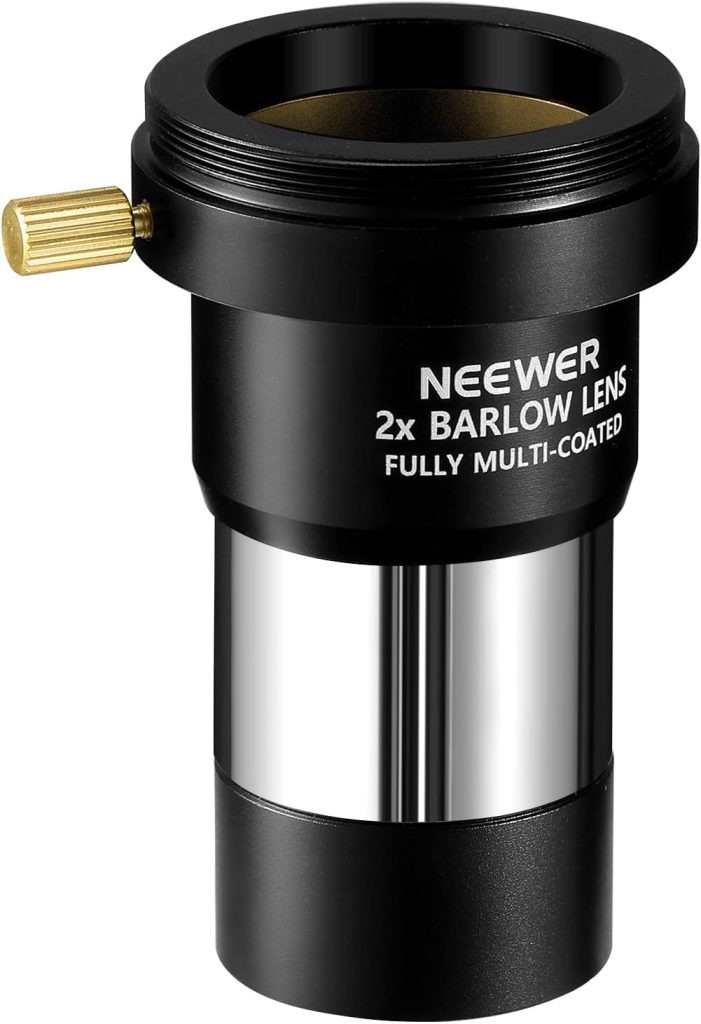
2. Between $20 to $40: GSO 1.5X/2X Shorty Barlow Lens
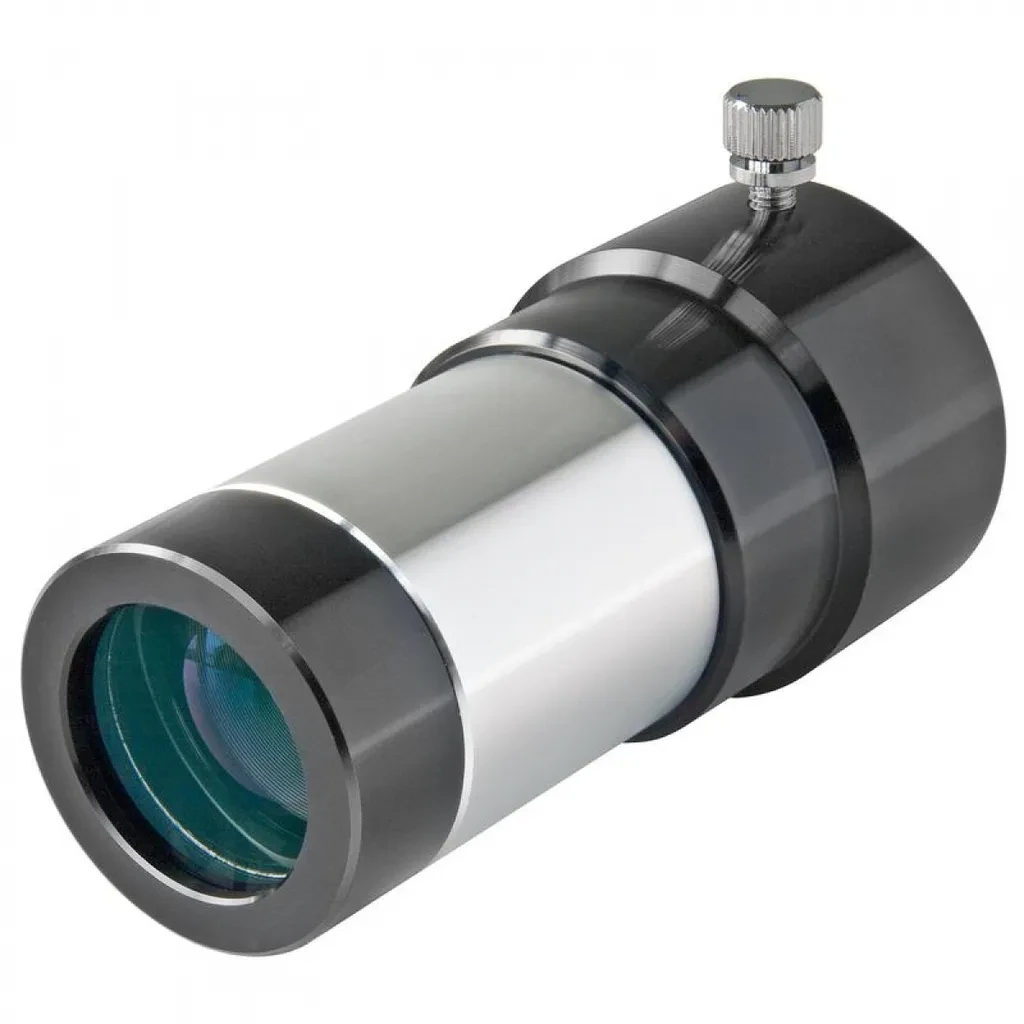
3. Between $40 and $100: GSO 2.5x Barlow Lens
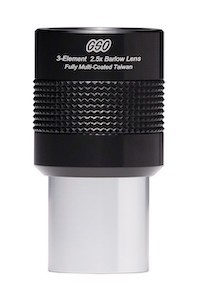
4. Best $100-$200 Choice: Tele-Vue 1.25” Barlow
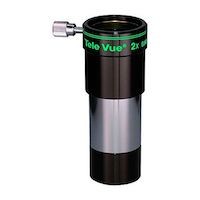
5. Best $200+ Choice: Tele Vue 2.5X Powermate
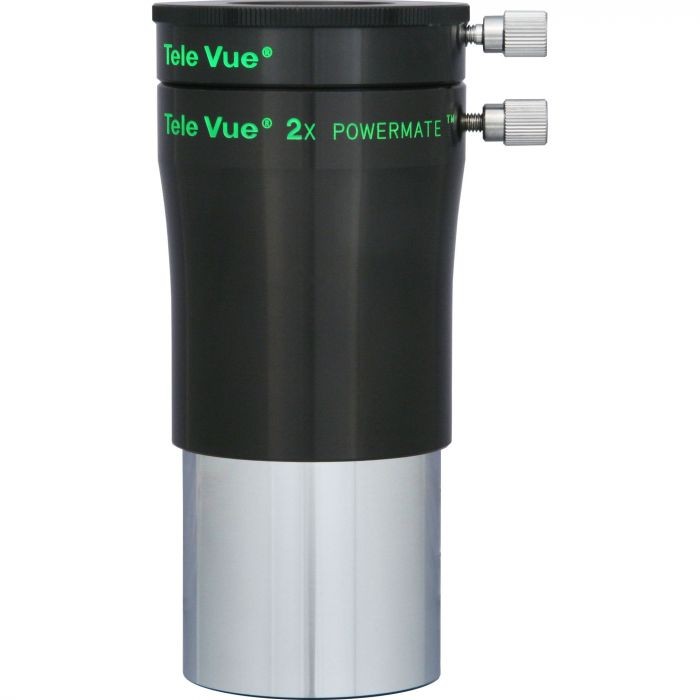
6. Second Best $200+ Choice: Explore Scientific 1.25” Focal Extender
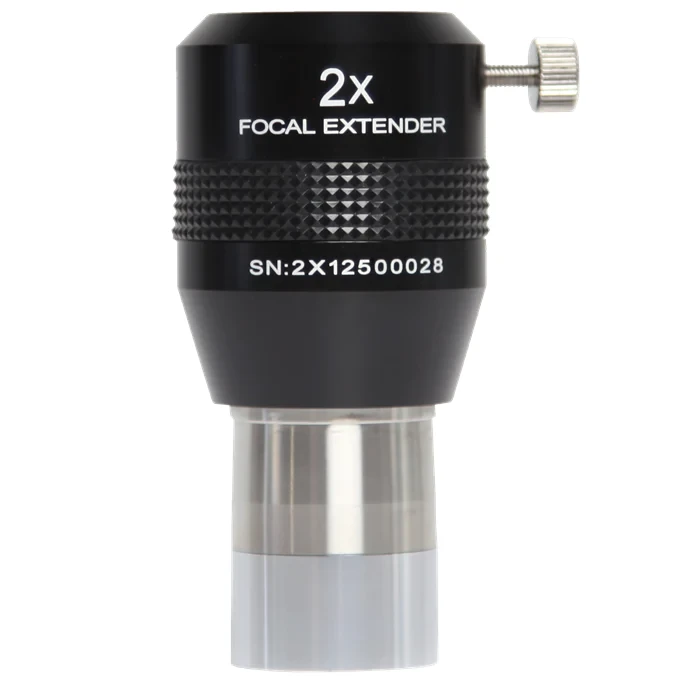
Best Barlow Lens For 2″ Focuser: My Recommendations
Combining a 2” Barlow lens with a 2” eyepiece can add significant weight to the telescope setup. This combination might introduce balance issues, which can affect the stability and orientation of your telescope. Always ensure that your telescope can comfortably support the combined weight of the Barlow lens and the eyepiece to avoid any mishaps.
A 2” Barlow is unnecessary for most users, as a Barlow generally is only needed to extend magnifications to higher than your eyepieces allow, where you are likely to be using 1.25” eyepieces towards the higher-power end anyway. Likewise, for planetary imaging, any suitable camera sensor does not need a 2” Barlow.
1. Under $100: GSO 2″ 2x ED
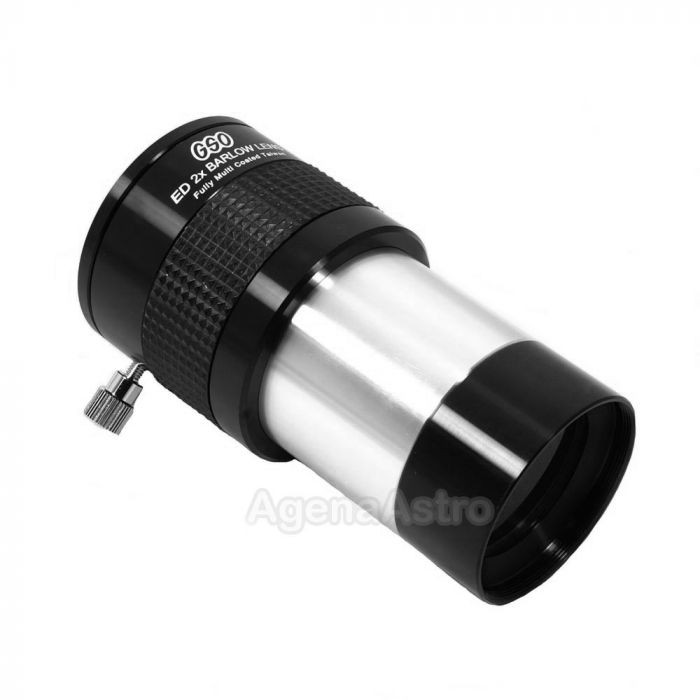
2. Between $100 – $175: Celestron Luminous 2” 2.5X Barlow Lens
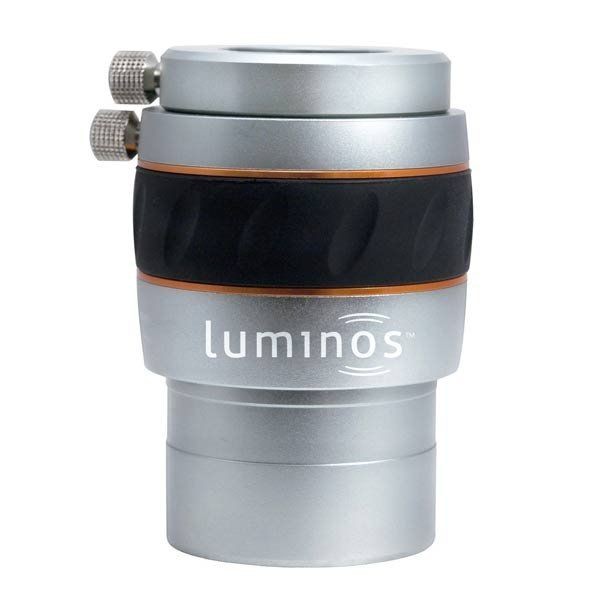
3. Between $175 – $250: Explore Scientific 2” 2X Focal Extender
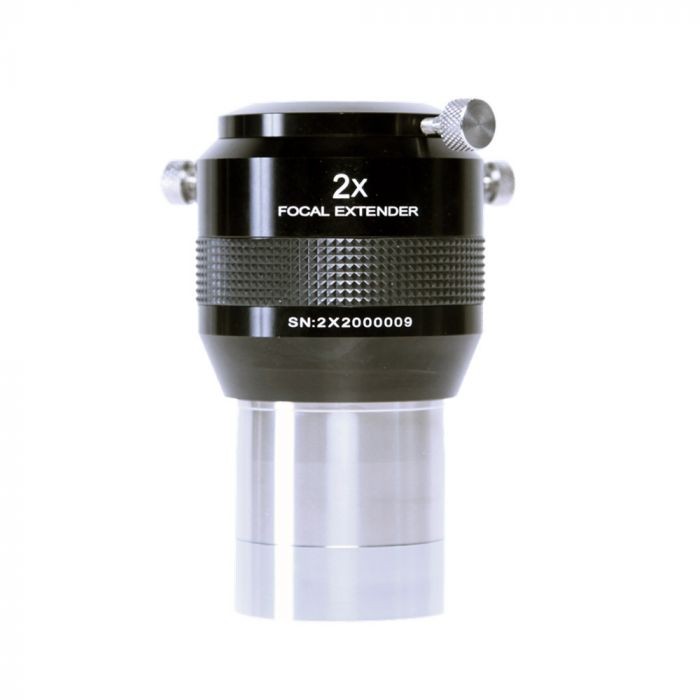
4. $275+ Choice: Tele Vue 2X 2” Powermate
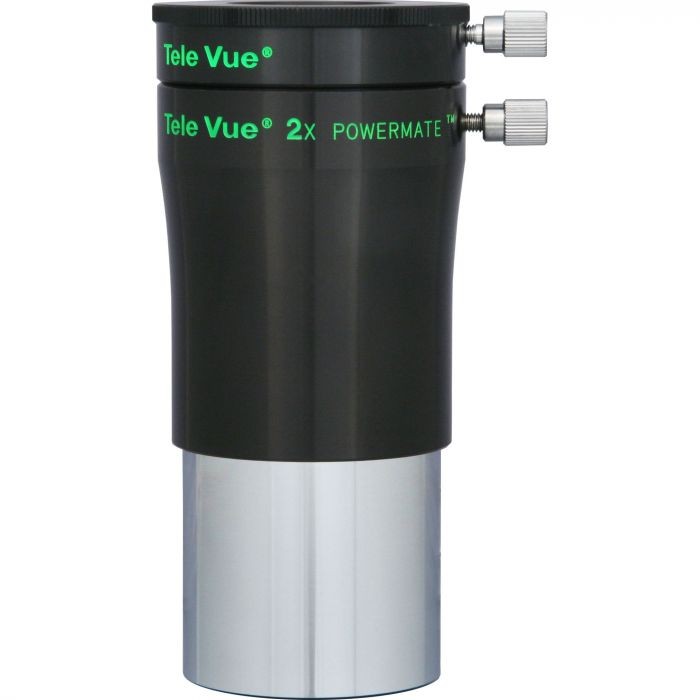
Advantages and Disadvantages of Barlow Lenses
- Enhanced Eye Relief: One of the standout benefits of using a Barlow lens is the ability to maximize eye relief. Eye relief denotes the optimal distance your eye needs to be from the eyepiece’s top lens to capture the entire field of view. Longer focal length eyepieces, which inherently possess lower power, often grant longer eye relief. This is pivotal for ensuring a comfortable viewing experience.
- Economical: Instead of purchasing multiple eyepieces for varied magnifications, a single Barlow lens can multiply the effective magnifications of eyepieces you already possess.
- Potential Image Quality Loss: Introducing an additional optical component into the light path might lead to a significant loss of sharpness or contrast if the Barlow isn’t of high quality.
- Focus shift: Barlow lenses that don’t properly seat in your focuser or diagonal body due to their length or other constraints can move the focal plane of the telescope so far that it is no longer possible to focus the image at the eyepiece.
- Weight: A 2” Barlow lens in particular is likely to throw off the balance of many telescope setups, and a Barlow inevitably leads to more strain on your focuser as the eyepiece is further from the focuser body, exerting more torque in addition to the eyepiece itself. This can cause cheaper focusers to sag or rack themselves up on their own.
Using Barlows in Astrophotography
Barlow lenses are often thought of as halving the focal length of the eyepiece, and when coming up with a collection of eyepieces to use with a Barlow I’d encourage that kind of thinking. (I.e., a 6mm eyepiece with a 2x Barlow performs like a 3mm eyepiece on its own.) However, in truth, the magnification increase is coming from extending the focal length of the telescope as much as it is from shortening the focal length of eyepieces. This means you can, in fact, use a Barlow lens with cameras as well as eyepieces.
(To clarify—when using a DSLR or Astro-camera for astrophotography, the telescope itself is being used as the “lens” of the camera. When imaging with cameras with permanently attached lenses, such as a point-and-shoot camera or a smartphone, you’ll have to use eyepieces as you would when using a telescope visually.)
When doing lunar or planetary imaging with a DSLR, you’ll often want to use a Barlow, perhaps even a very strong one like a 3x or 5x, to reach an image scale where each pixel corresponds to the limit of the telescope’s resolution.
Often, Dobsonian reflectors intended for visual use are incapable of coming into focus with a DSLR, because the sensor is too far back in the camera body. Often, a Barlow lens can be added to move the light path outward enough, so most Dobsonian users must use a Barlow when doing astrophotography with their DSLR. This basically restricts them to the Moon at high power and the planets, since the focal ratio becomes too slow to image dim objects.
Barlows vs Zoom Eyepieces: Which to Get?
In the eyepieces article, we discussed Zoom Eyepieces, which, like the Barlow, is a scheme to use a single accessory to vastly increase the number of available magnifications. I’ll spare a brief thought for them here, too. Zooms use a complicated optical path and mechanism to smoothly change the focal length of the eyepiece to access any magnification within a certain range. Zooms have several drawbacks compared to regular eyepieces: they often have narrower fields of view, they can be softer at the edges, and they can have mechanical problems. But whereas Barlows will double your range of magnification, Zooms give you an unlimited number of possible magnifications to choose from.
I’d rather have a set of eyepieces and a good Barlow. Barlows tend not to degrade the quality of eyepieces. (Though we’ll see that some low-power luxury eyepieces can be affected), whereas Zooms are often not as good as individual eyepieces.
Because Zooms have a limited range (something like the high power being 2x-3x times the low power) and usually top out at mid-powers, a Barlow can often still be useful in faster telescopes to reach higher powers with a Zoom. A good kit for a travel telescope working at f/5 (a Short Tube 80 refractor, or perhaps a 5” or 6” f/5 Newtonian) might be a 32mm Plossl for wide field and low power, an 8-24mm Zoom eyepiece for mid powers, and a 3x Barlow to turn the 8-24 into a 2.7-8mm.
Barlow vs. “Powermates” or “Focal Extenders”
TeleVue, a premium/luxury eyepiece manufacturer, sells both Barlow lenses and a series of accessories called “Powermates.” The generic term is “Focal Extender.” The reason being that a simple, single-lens-group Barlow lens causes a few changes to the properties of eyepieces as a result of pushing the exit pupil outwards. For example, it can increase their eye relief, cause kidney-bean blackouts when you move your eye to look around, and certain Barlows may add small amounts of false color fringing. They may also vignette the light path of certain long-focal-length eyepieces, providing a dimmer, narrower field of view. Focal Extenders use a more complicated optical system to remove all the effects of the extended eye relief in long-focal-length luxury eyepieces, allowing you to treat the telescope as if it were a regular telescope with a longer focal length. These are rather niche devices, and are only really important if you have long-focal-length, wide-field-of-view luxury eyepieces. For example, my generic 32mm Plossl and my Explore Scientific 11mm 82-degree work fine with a 2.5x regular Barlow, but my Televue 16mm 82-degree Nagler seems to be wrecked by the Barlow.
Another crucial difference between Barlows and Focal Extenders is that the exact magnification factor of a Barlow will be slightly different depending upon the spacing between the lens and the eyepiece. Just as every eyepiece will have a slightly different position when focusing the telescope, every eyepiece will have a slightly different magnification factor from the Barlow. When imaging with a camera, the distance between the Barlow and the camera sensor will also change precisely how much the Barlow modifies the focal length. Focal extenders, however, fully correct for this, and will always magnify exactly by the magnification factor, no matter the spacing between the sensor or eyepiece and the telescope optics.
Explore Scientific carries its own brand of Focal Extenders, which are highly comparable to TeleVue’s Powermates.
Unscrewable Lens Cells
Most eyepieces have threads on the end of the barrel to attach filters. Though Barlows generally don’t, they are often designed in such a way that the Barlow Lens itself can be unscrewed from the barrel and then screwed onto the eyepiece directly. This results in a lower magnification than you would get from using the lens with the spacer tube, often something in the order of 50% or 75% of the normal factor. However, messing with the spacing too much will result in changing the correction of the Barlow, meaning there could be added spherical aberration, causing images to be too fuzzy, so you generally don’t want to extend the tube.
There are some Barlows specifically intended to be threaded onto the ends of eyepieces. This would be lighter and have a lower profile, but it’d be generally less convenient because you’d have to unscrew it and screw it constantly. Additionally, some screw-on Barlows are used with specialty equipment like Binoviewers and DSLR cameras to shunt the light path out enough to be used in visual Dobsonians and other Newtonians, where there might not be enough inward travel in the focuser for those devices.
Is Stacking Barlows Recommended?
It is possible to stack Barlows together. However, the actual magnification factor you get is not easy to calculate. You might think a 2x Barlow on a 5x Barlow would result in a 10x Barlow. But because the exact magnification factor depends upon the spacing of the Barlow versus the eyepiece, there is no simple equation for figuring out the magnification of a stacked Barlow. For example, a 2x on a 5x would have a very different magnification than a 5x on a 2x. (If memory serves, the latter had a far higher power.)
Because of the maximum useful magnification of a telescope, you will almost never find a situation that requires stacking Barlows. But if the telescope has a very fast focal ratio, the seeing is incredibly steady, the optics of the telescope and barlow lenses and eyepieces are all very good, and you want to try to squeeze as much detail as possible out of a bright planet or the Moon, you could try stacking more than one Barlow and just seeing what happens. That said, I don’t recommend planning an eyepiece collection based around stacking Barlows. There are too many unknowns, and you’ll never know for sure what magnification you’re actually using.

Any reviews on barlows? 1.25″ vs. 2″?
The goal of the article is not to do a competitive comparison between barlows.
As far as 1.25″ vs. 2″, the main consideration is whether you have 2″ eyepieces and whether you want to barlow them. Most people don’t barlow 2″ eyepieces.
I have a 2″ 2X GSO barlow that I like very much, but I don’t use it as much as I thought I would. When I didn’t have wide angle 1.25″ eyepieces I used it for a while, but as I filled in my eyepiece set with 82 degree 1.25″ eyepieces I stopped using the 2″ barlow. But, for a while, I used it a lot.
Most people have one or two 2″ eyepieces and the rest are 1.25″. The exception may be those people who have very long focal length scopes, say over 3000 mm, who would like to leverage their 2″ eyepieces and their wide apparent field of views. 2″ eyepieces tend to be quite expensive so being able to barlow them can be a very reasonable approach if your eyepiece budget is limited.
One of the scopes I use is a 14″ Meade LX200 with a 3500 mm FL. I have two 2″ eyepieces. I could use my 2″ barlow with this one, but find I tend to go to my 1.25″ 82 degree eyepieces rather than barlow the 2″ eyepieces.
Ed, Thanks. I do understand that the point of the article was to compare barlows, sorry I didn’t mean to go off on a tangent. It’s just that I see lots of reviews on different equipment and barlows is one I have not seen.
Regardless, going back to your comment regarding 1.2″ vs. 2″. I assume that while there may be limited use for a 2″ barlow that as long as you have a 1.25″ adaptor there is no harm in a 2″?
For the benefit of those who requested recommendations, I have updated the article and added some recommendations.
Is GSO 1.25″ 3x ED Barlow Lens good for a 70×400mm refractor telescope?
As is described in the article, you pick your Barlow according to your goals. What level of magnification are you trying to achieve and what eyepieces you have now. However, I have found that GSO makes good, moderate-priced barlows. I have two and like them very much.
With a 70 mm aperture, I would not look to push more than 140X with any expectation of a good image. Much of the time 100X will probably give you a better image with more detail. But don’t hold back on my say so. A Barlow is a great, inexpensive way to test those higher magnifications without having to buy eyepieces. Some nights the air will let you push much higher than you can normally.
Hi there. In the comments for your article on eyepieces you mention that you use a 2x Barlow with your BHZ eyepiece that has a removable element also making it a 1.5x. Is this the GSO Barlow mentioned in this article and if so, is it the 2″ or 1.25″ version? Many thanks.
The 2X Barlow I use with the Baader Hyperion Zoom is the 2″ GSO which has a removable 1.5X Barlow lens. I screw this onto the 1.25 to 2″ adapter that comes with the zoom which is treaded for filters. This works very well in my 8″ and 12″ Newtonian/Dobsonians as I would need an adapter for the BH Zoom in these focusers. However, GSO has the 1.25″ version that can be used directly on the zoom and would be most appropriate for a 1.25″ focuser scope. I have not used the 1.25″ GSO but have no doubt it would work well.
If you use this method in a diagonal, check to make sure that the added length of the Barlow element does not touch the mirror/prism in the diagonal. If it would touch you might have to pull back a bit and lock the zoom there. You can also buy parfocalizing rings that lock onto an eyepiece barrel to hold it out of the focuser a bit on a consistent basis. Just make sure that if you use the zoom without the Barlow element that you have enough into the diagonal to get a solid lock on the eyepiece. This is not a concern on a Newtonian as there is no diagonal.